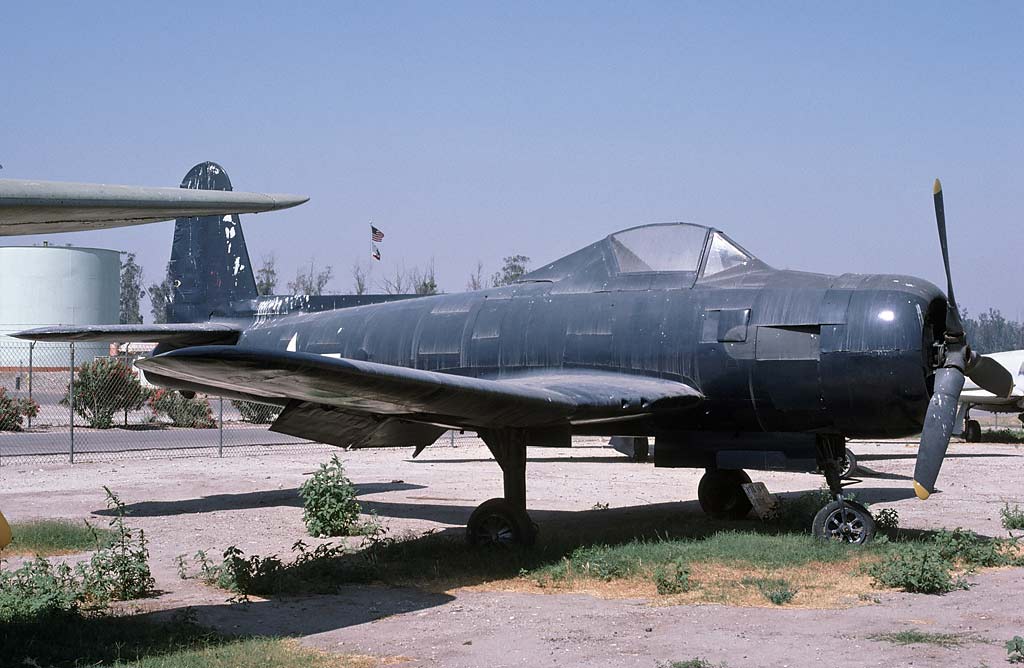The Ryan FR Fireball, an innovative WWII hybrid fighter, integrating both a piston engine and a jet engine, designed for carrier-based operations.
This article explores the Ryan FR Fireball, an innovative hybrid fighter aircraft combining piston and jet propulsion. It details the historical context and development goals, including the need for a transitional fighter capable of operating from carriers during WWII. The design section delves into its unique hybrid propulsion system and the associated advantages and drawbacks. The performance analysis compares the Fireball with contemporary aircraft, highlighting its unique capabilities. The military use section examines its armament, operational history, and impact, concluding with an assessment of its legacy in aviation history.
The Ryan FR Fireball represents a unique chapter in aviation history as one of the first aircraft to merge jet and piston engine technologies, designed for carrier operations in the late WWII era.
History of the Development of the Ryan FR Fireball:
Developed during World War II, the FR Fireball was a response to the US Navy’s need for an advanced fighter capable of operating from aircraft carriers and transitioning into the jet age. Ryan Aeronautical Company undertook the project, aiming to create a hybrid aircraft that combined the reliability of a piston engine with the performance benefits of a jet engine.
The program was launched as the war was evolving, with jet technology emerging as a significant advancement in aircraft performance. The first flight of the Fireball occurred on June 25, 1944. The FR Fireball did not have a NATO nickname, as it was developed before NATO’s establishment.
Design of the Ryan FR Fireball:
The FR Fireball’s design was a groundbreaking blend of traditional and modern aviation technology. It had a wingspan of 12.19 meters (40 feet) and a length of 10.06 meters (33 feet). The aircraft was powered by a combination of a Wright R-1820-72W Cyclone radial piston engine and a General Electric J31-GE-3 turbojet engine.
This dual-engine configuration allowed for increased versatility, enabling the Fireball to operate efficiently in a variety of scenarios, including those where jet fuel might not be available. The design also included folding wings for carrier operations.
However, integrating two different propulsion systems in one airframe brought challenges, including weight distribution and complexity in maintenance and operations.

Performance of the Ryan FR Fireball:
In performance terms, the FR Fireball was innovative but not without limitations. It could reach a top speed of 426 mph (685 km/h) using both engines and had a service ceiling of 12,800 meters (42,000 feet). Its range was around 1,540 kilometers (960 miles) on internal fuel.
When compared to pure piston-engine fighters like the F6F Hellcat or jet fighters like the Me 262, the Fireball was a compromise, offering the versatility of both worlds but not excelling in either.
Military Use and Combat of the Ryan FR Fireball:
The FR Fireball was deployed by the US Navy but saw limited combat use, primarily due to the end of WWII. Its armament consisted of four 0.50 in (12.7 mm) M2 Browning machine guns, and it had provisions for bombs and rockets.
The Fireball participated in several post-war operations, demonstrating its capabilities in carrier operations and serving as a testbed for developing carrier-based jet operations.
The aircraft did not compete directly with other fighters in combat but was a transitional model, bridging the gap between piston and jet technologies. It was not exported to other countries and was eventually replaced by more advanced, purely jet-powered aircraft.
The Ryan FR Fireball holds a special place in aviation history as a novel attempt to merge piston and jet propulsion in a single airframe. While it did not see extensive combat, its development was significant in the evolution of carrier-based aircraft and in the broader transition from piston to jet engines in military aviation. The Fireball’s legacy lies in its role as a stepping stone that paved the way for future advancements in jet technology.
Back to the Warbirds section.